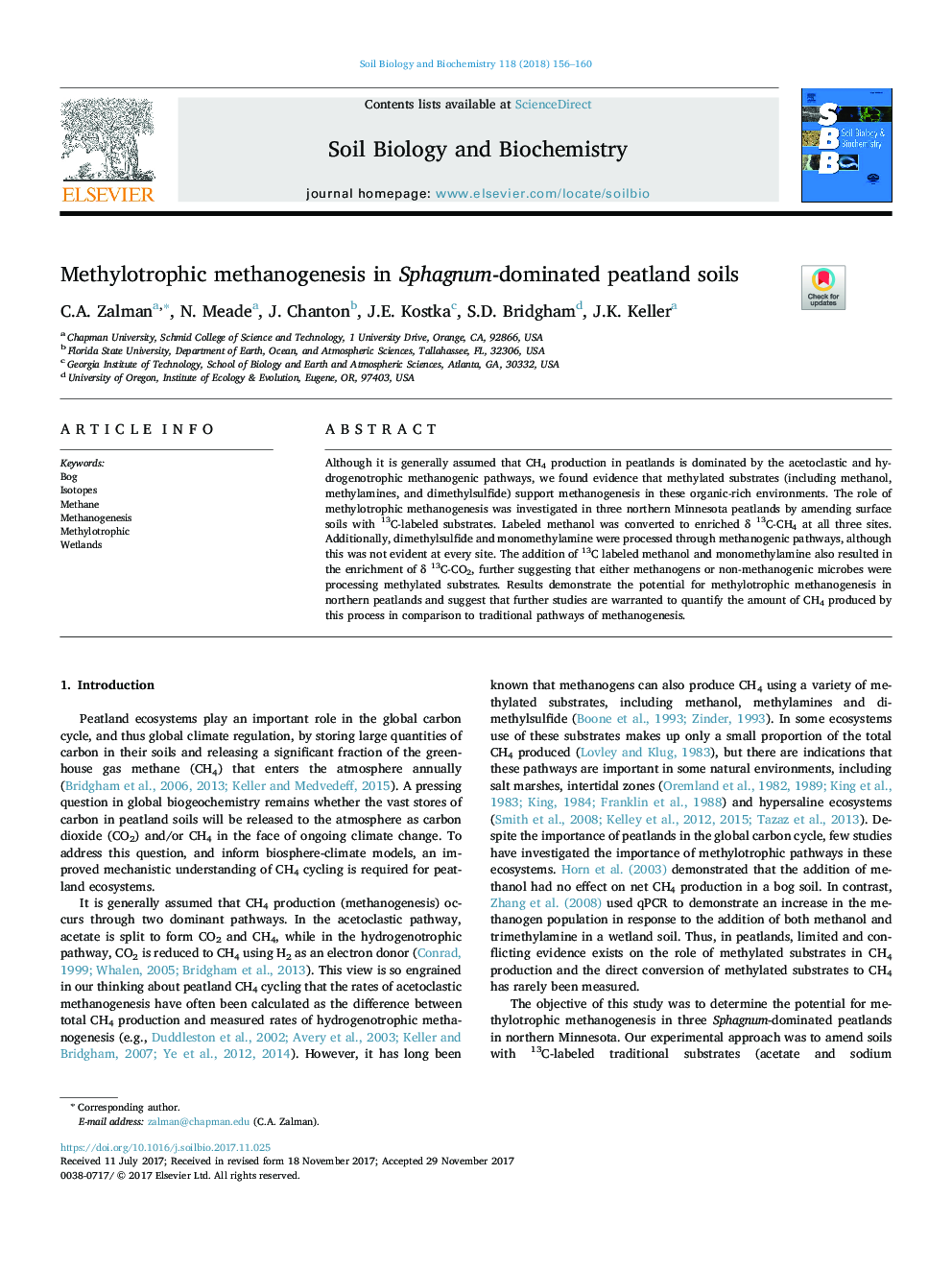| Article ID | Journal | Published Year | Pages | File Type |
|---|---|---|---|---|
| 8363003 | Soil Biology and Biochemistry | 2018 | 5 Pages |
Abstract
Although it is generally assumed that CH4 production in peatlands is dominated by the acetoclastic and hydrogenotrophic methanogenic pathways, we found evidence that methylated substrates (including methanol, methylamines, and dimethylsulfide) support methanogenesis in these organic-rich environments. The role of methylotrophic methanogenesis was investigated in three northern Minnesota peatlands by amending surface soils with 13C-labeled substrates. Labeled methanol was converted to enriched δ 13C-CH4 at all three sites. Additionally, dimethylsulfide and monomethylamine were processed through methanogenic pathways, although this was not evident at every site. The addition of 13C labeled methanol and monomethylamine also resulted in the enrichment of δ 13C-CO2, further suggesting that either methanogens or non-methanogenic microbes were processing methylated substrates. Results demonstrate the potential for methylotrophic methanogenesis in northern peatlands and suggest that further studies are warranted to quantify the amount of CH4 produced by this process in comparison to traditional pathways of methanogenesis.
Related Topics
Life Sciences
Agricultural and Biological Sciences
Soil Science
Authors
C.A. Zalman, N. Meade, J. Chanton, J.E. Kostka, S.D. Bridgham, J.K. Keller,
